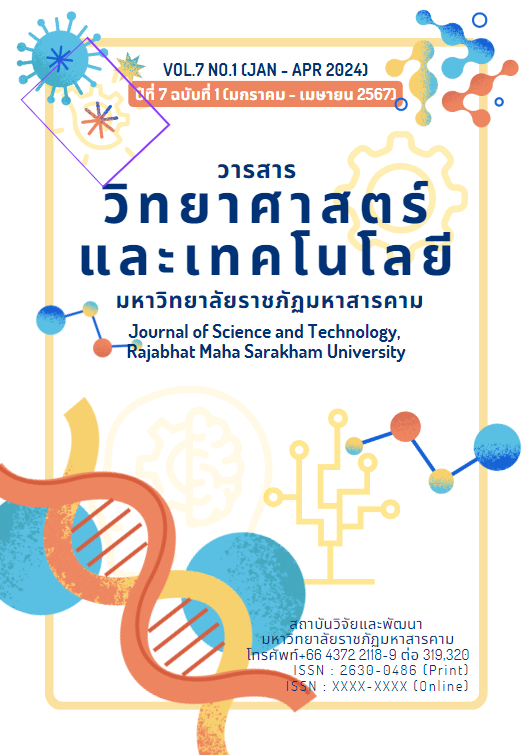The Development of a Forecast Model for Predicting Product Orders Using Data Mining Techniques
Keywords:
Data mining techniques, Forecasting models, Product ordersAbstract
The objective of this research is to test a forecasting model for predicting product orders and determine the efficiency of the system. The researcher created using the Cross Validation 10 Folds method through data mining techniques and find satisfaction survey results of entrepreneurs who have tried using the forecasting model system to predict product orders using data mining techniques. From the 5-level score criteria using basic statistics, namely finding the average and standard deviation. It was found that the Decision Tree technique (J48) had the highest accuracy and was higher than other techniques. It is calculated as 84.84 percent, including the lowest error value, calculated as 15.16 percent, followed by the technique for searching for friends near the house (K-Nearest Neighbors), which has an accuracy value calculated as 81.60 percent, with an error value calculated in hundreds. 18.40 each and the Naïve Bayes technique has the least accuracy value, accounting for 74.11 percent, which has the highest error value, accounting for 25.89 percent.
Therefore, the Cross Validation 10 Folds method through Decision Tree technique (J48) is used to classify learning data of product orders. There were satisfaction scores regarding the development of the order forecasting model system using data mining techniques on the efficiency of the system. From a trial of 50 stores in the central region, the average was 4.12 and the standard deviation was 0.10. The interpretation score was good.
References
Ahmad, N. B. Hj. Shamsuddin and S. M. (2010). A comparative analysis of mining techniques for Automatic detection of student's learning style. Intelligent Systems Design and Applications, Cairo, Egypt, pp. 877-882.
Assawamekin, N. (2018). Basic principles of software engineering, Publisher: SE-ED Education, Bangkok.
Chankaew, K. and Piriyaphonsiri, J. (2017). Decision support system for purchasing life insurance. Hat Yai National and International Academic Conference, Hat Yai University, No.8, pp. 370-380.
Office of the National Economic and Social Development Council Office of the Prime Minister. (2022). National Economic and Social Development Plan No. 13 (2023-2027). Royal Gazette.
Pakdeewattanakul, K. (2010). Decision support system scripture and expert system, Publisher: KTP.
Pantoo, O. (2016). Synthesis of an adaptive e-learning model with a mentor system electronics Using the VARK learning model analyzed using data mining methods. Doctor of Philosophy in Information Technology, Graduate School King Mongkut's University of Technology Klao Phra Nakhon Nuea.
Pharasamrit, Y., Phubunop, J. and Phongsiri, W. (2013). Comparison of data mining algorithms to analyze factors affecting students' learning levels. Journal of Science and Technology Mahasarakham University, Vol. 9, pp. 281-289.
Wilailak, S., Charoenphantarak, W. and Wichadakul, D. (2015). Using data mining techniques to predict student academic performance Demonstration School of Kasetsart University Kamphaeng Saen Campus Educational Research and Development Center. Veridian E-Journal Science and Technology Silpakorn University, Vol. 2, No. 2, pp. 1-17.



